Study on Cracking Law of Earthen Soil under Dry Shrinkage Condition
Abstract
1. Introduction
2. Research Methodology
2.1. Basic Physical Properties of Site Soils
2.2. Dry Shrinkage Test
2.3. Numerical Modeling
= πα(Rsinφ)2(1/r1 − 1/r2) + 2πRαsinφ
= πRαsinφ{sinφ[cos(φ + θ)/(1 − cosφ) − cos(φ + θ)/[sin(φ + θ) + cosφ − sinθ − 1]] + 2}
3. Analysis of Test Results
3.1. Analysis of Dry Shrinkage Test Results
3.2. Microstructure Analysis
3.3. Analysis of Numerical Simulation Results
4. Gridding
5. Conclusions
Author Contributions
Funding
Institutional Review Board Statement
Informed Consent Statement
Conflicts of Interest
References
- Tang, X.-W.; Yu, Y.; Zhou, L.-P.; Fei, M.-L.; Sun, G.-P. Study on Strength and Permeability of Silt Soils Improving by Tung Oil and Sticky Rice Juice. Adv. Civ. Eng. 2020, 2020, 8852998. [Google Scholar] [CrossRef]
- Zhang, Q.; Chen, W.; Zhang, J. Wettability of earthen sites protected by PVA solution with a high degree of alcoholysis. Catena 2020, 196, 104929. [Google Scholar] [CrossRef]
- Wang, D.Y.; Tang, C.S.; Shi, B.; Li, J. Studying the effect of drying on soil hydro-mechanical properties using micro-penetration method. Environ. Earth Sci. 2016, 75, 1009. [Google Scholar] [CrossRef]
- Mao, W.J.; Shen, Y.X.; Zhu, Y.P.; Bai, Y.; Sun, M. Disentangling the Deformation Process of Earthen Sites and Understanding the Role of Na2SO4 and Precipitation: A Case Study on the Great Wall Relics of the Ming Dynasty in Yulin, China. Stud. Conserv. 2021, 66, 51–63. [Google Scholar] [CrossRef]
- Song, D.; Yue, J.; Yuan, J.; Yang, G.; Zhao, G.; Yang, Y.; Wang, D. Study on soil mechanical characteristics of sites in northwest Henan. Exp. Mech. 2019, 34, 121–130. [Google Scholar]
- Wei, X.; Gao, C.; Liu, K. A Review of Cracking Behavior and Mechanism in Clayey Soils Related to Desiccation. Adv. Civ. Eng. 2020, 2020, 8880873. [Google Scholar] [CrossRef]
- Wang, S.; Luo, Z.; Li, X.; Wen, T. Analysis of cracking process and mechanical mechanism of shallow soil considering local moisture content effect. Rock Soil Mech. 2021, 42, 1395–1403. [Google Scholar]
- Zeng, H.; Tang Ch Lin, L.; Xu, J.; Liu, J.; Rong, D.; Wang, D.; Shi, B. Study on the development direction and evolution characteristics of dry shrinkage fractures in soil with interlayer friction effects. Chin. J. Geotech. Eng. 2019, 41, 1172–1180. [Google Scholar]
- Zhang, Z.; Chen, Y.; Kong, L.; Wang, C.; Li, W. Effect of geometric characteristics of soil shrinkage fractures on infiltration. Trans. Chin. Soc. Agric. Mach. 2015, 46, 192–197. [Google Scholar]
- Jia, X.; Hao, Y.; Li, P.; Zhang, X.; Lu, D. Nanoscale deformation and crack processes of kaolinite under water impact using molecular dynamics simulations. Appl. Clay Sci. 2021, 206, 106071. [Google Scholar] [CrossRef]
- Wu, C.; Wang, Y.; Feng, D.; Zhou, Y. Experimental study on the coupled behavior of dynamic cracking and moisture-heat evolution of a clay under evaporation. Bull. Eng. Geol. Environ. 2021, 80, 4943–4955. [Google Scholar] [CrossRef]
- Xu, L.; Coop, M. Influence of structure on the behavior of a saturated clayey loess. Can. Geotech. J. 2016, 53, 1026–1037. [Google Scholar] [CrossRef]
- Tang, H.; Dong, Y.; Wang, T.; Dong, Y. Simulation of Strain Localization with Discrete Element-Cosserat Continuum Finite Element Two Scale Method for Granular Materials. J. Mech. Phys. Solids 2018, 122, 450–471. [Google Scholar] [CrossRef]
- Wei, X.; Hattab, M.; Bompard, P.; Fleureau, J.-M. Highlighting some mechanisms of crack formation and propagation in clays on drying path. Geotechnique 2016, 66, 287–300. [Google Scholar] [CrossRef]
- Zhang, Y.; Ye, W.M.; Chen, B.; Chen, Y.G.; Ye, B. Desiccation of NaCl-contaminated soil of earthen heritages in the Site of Yar City, northwest China. Appl. Clay Sci. 2016, 124–125, 1–10. [Google Scholar] [CrossRef]
- Li, J.H.; Lu, Z.; Guo, L.B.; Zhang, L. Experimental study on soil-water characteristic curve for silty clay with desiccation cracks. Eng. Geol. 2017, 218, 70–76. [Google Scholar] [CrossRef]
- Song, W.; Cui, Y.J.; Tang, A.M.; Ding, W.-Q.; Wang, Q. Experimental study on water evaporation from compacted clay using environmental chamber. Can. Geotech. J. 2017, 53, 1293–1304. [Google Scholar] [CrossRef]
- Forcellini, D. The Role of the Water Level in the Assessment of Seismic Vulnerability for the 23 November 1980 Irpinia-Basilicata Earthquake. Geosciences 2020, 10, 229. [Google Scholar] [CrossRef]
- Yue, J.; Huang, X.; Zhao, L.; Kong, Q.; Chen, Y.; Wang, Z. Method based on soil stress-strain relationship at finite element sites. Mech. Pract. 2021, 43, 921–932. [Google Scholar]
- Forcellini, D.; Gobbi, S. Soil structure interaction assessment with advanced numerical simulations. In Proceedings of the (COMPDYN) Conference, Crete Island, Greece, 25–27 May 2015; pp. 219–220. [Google Scholar]
- Yue, J.; Huang, X.; Zhao, L.; Wang, Z. Study on the factors affecting cracking of earthen soil under dry shrinkage and freeze -thaw conditions. Sci. Rep. 2022, 54, 111–112. [Google Scholar] [CrossRef]
- Jiang, Q.; Liu, L.; Jiao, Y.; Wang, H. Experimental study on soil strength characteristics and microstructure of dry and wet cycle sliding belt. Rock Soil Mech. 2019, 40, 1005–1012+1022. [Google Scholar]
- Xuanjia, H. Study on the Mechanism of Soil Shrinkage and Deterioration of Zhouqiao Site at Micro scale. Ph.D. Thesis, Henan University, Henan, China, 2022; pp. 42–43. [Google Scholar]

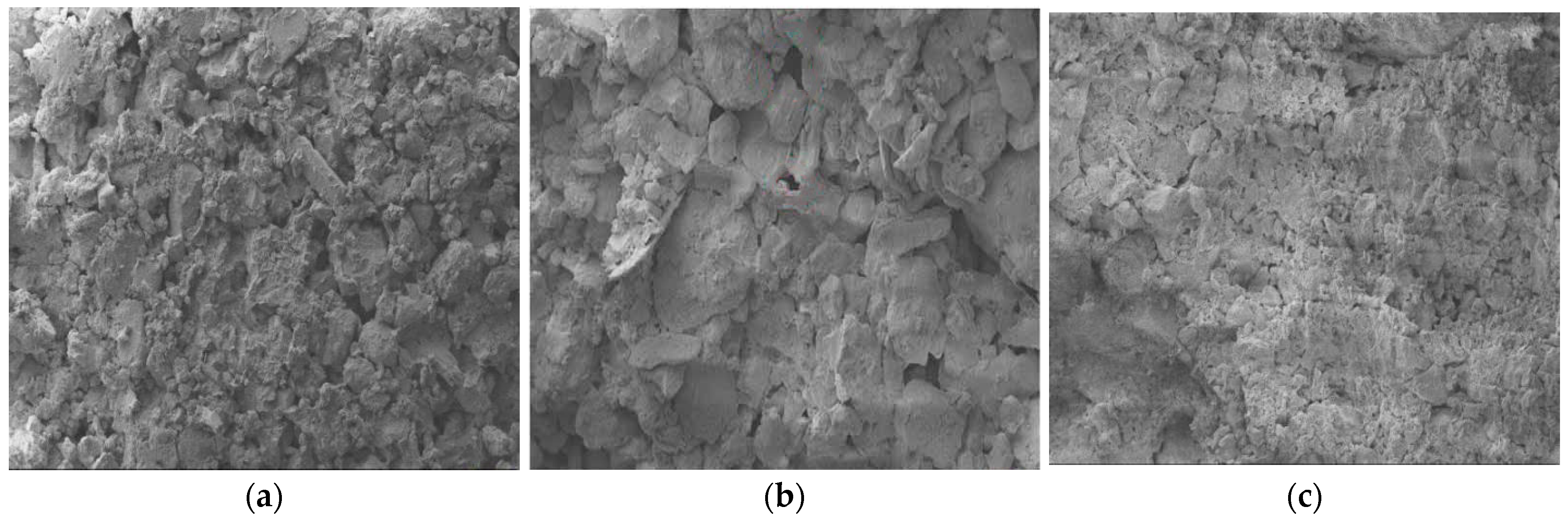
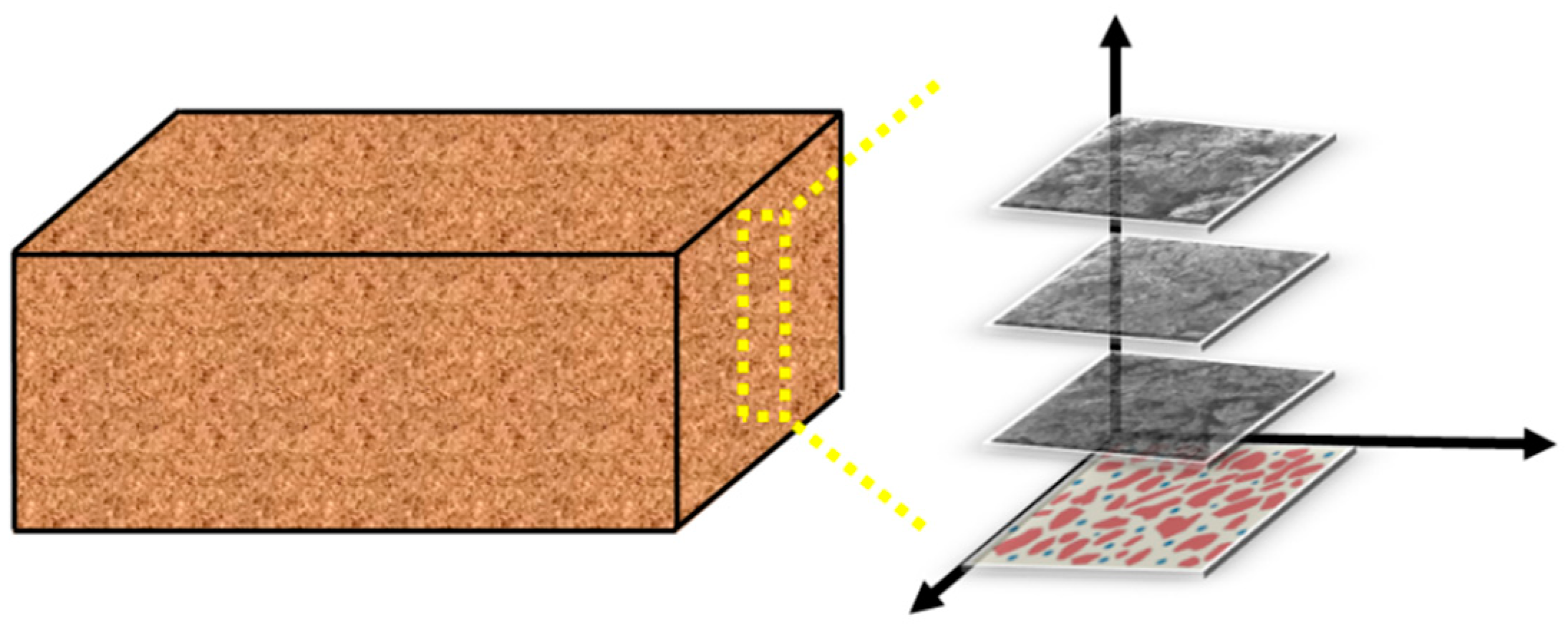
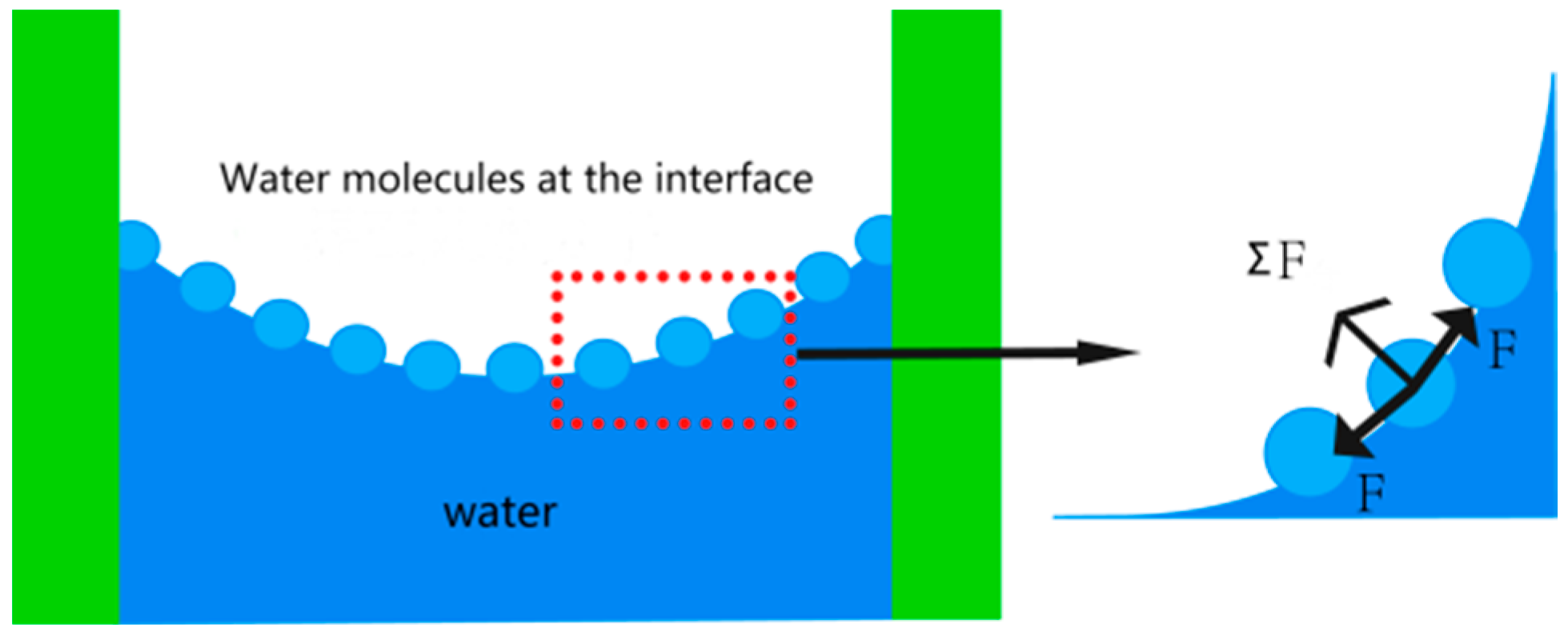
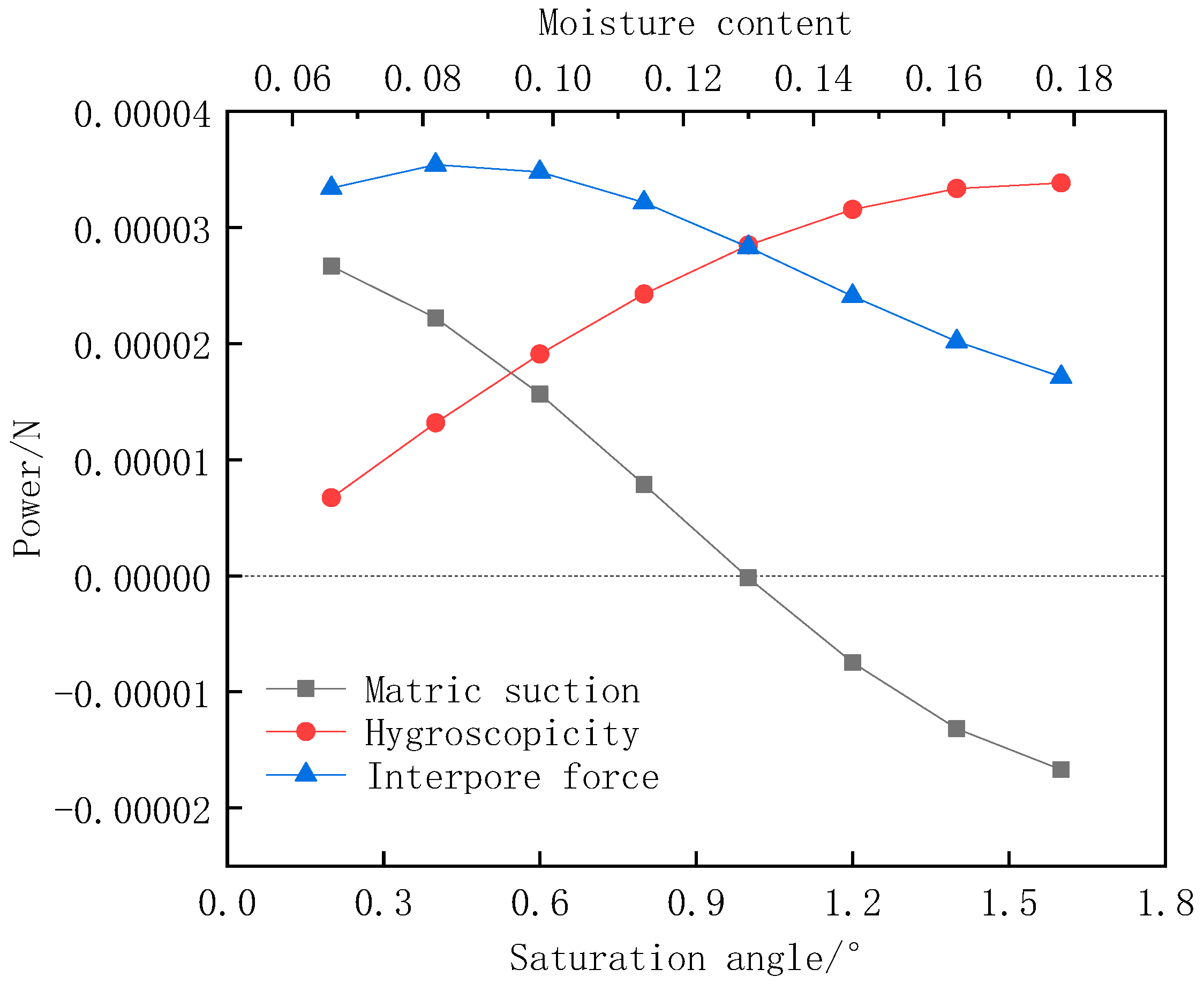
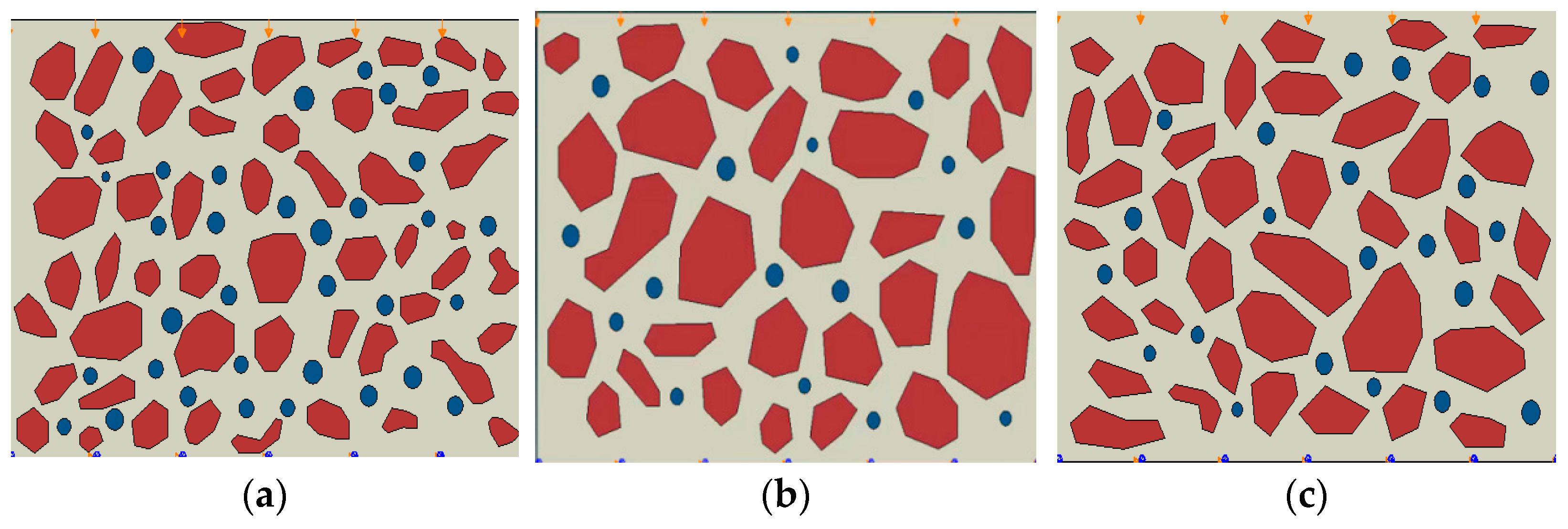
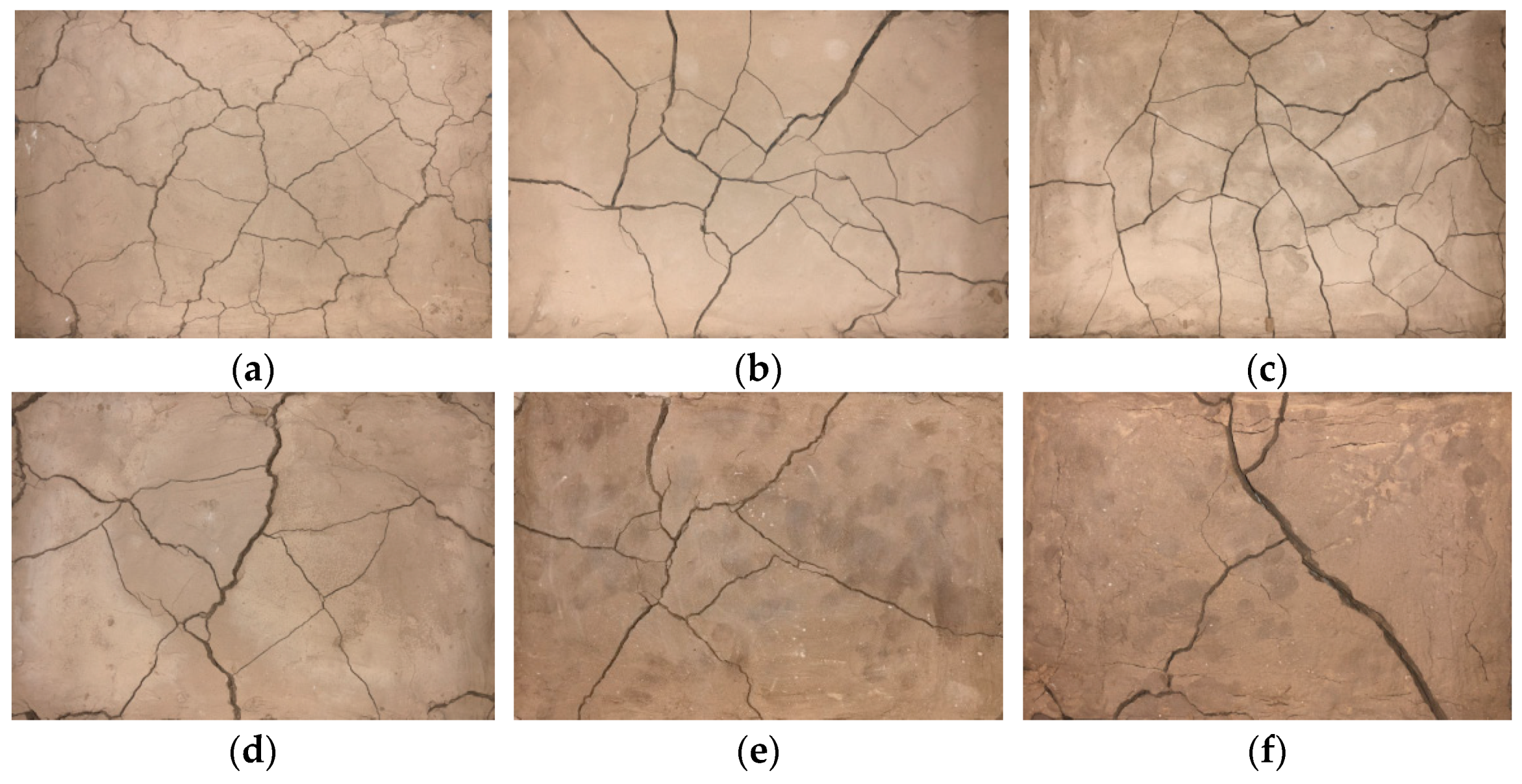







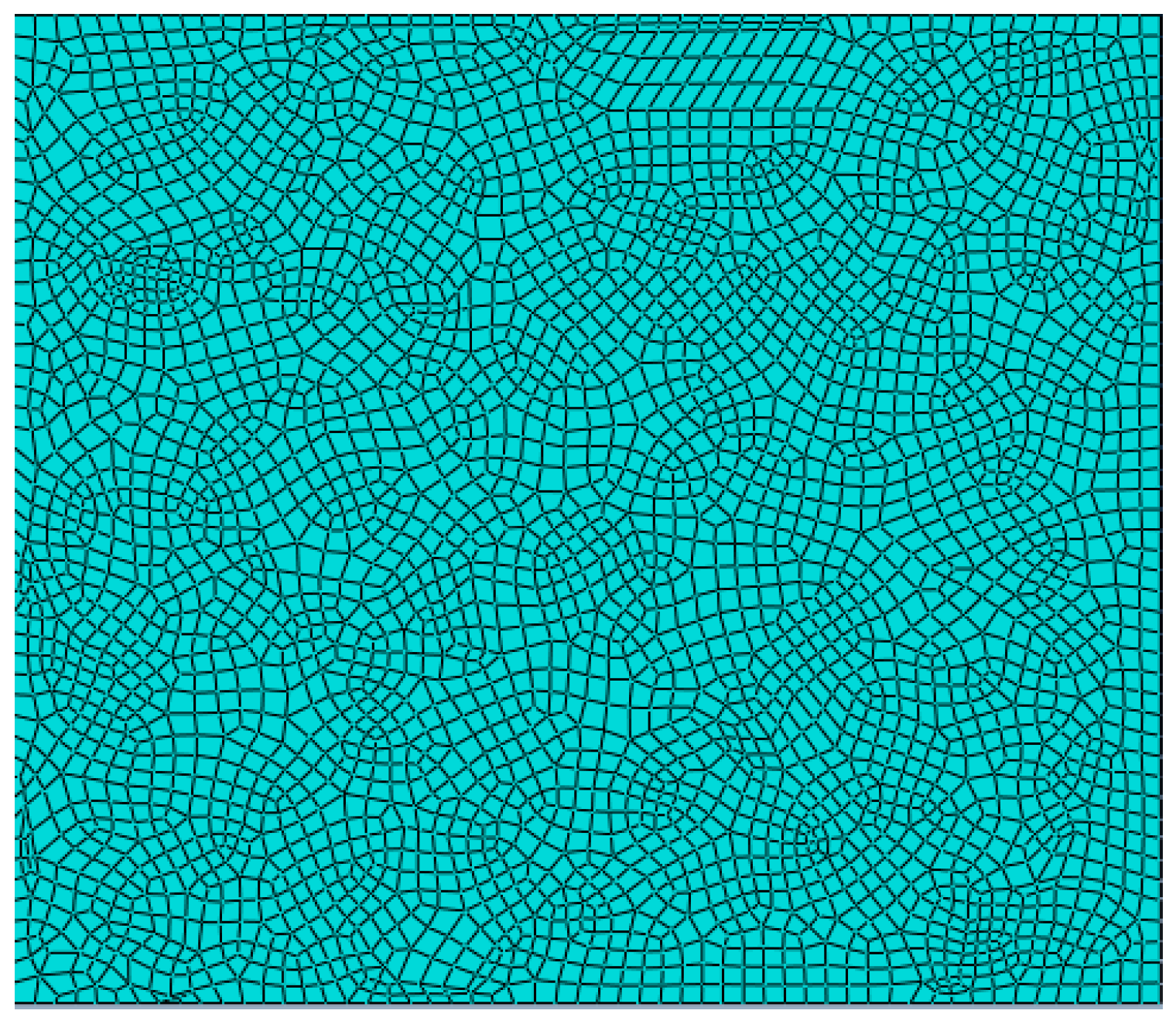
| Location of Soil Collection | Liquid Limit/% | Plastic Limit /% | Plasticity Index | Natural Dry Density /(g/cm3) | Natural Water Content/% |
|---|---|---|---|---|---|
| Upper Level | 35.5 | 21.2 | 14.3 | 1.63 | 12.5 |
| Middle Level | 32.8 | 19.7 | 13.1 | 1.65 | 14.3 |
| lower level | 30.9 | 18.5 | 12.4 | 1.67 | 15.6 |
| Test Number | Control Variables | Specimen Combination | |
|---|---|---|---|
| Thickness of Soil Layer (A) | Water Content (B) | ||
| 1 | 1 cm | 20% | A1B1 |
| 2 | 28% | A1B2 | |
| 3 | 35% | A1B3 | |
| 4 | 3 cm | 20% | A2B1 |
| 5 | 28% | A2B2 | |
| 6 | 35% | A2B3 | |
| 7 | 5 cm | 20% | A3B1 |
| 8 | 28% | A3B2 | |
| 9 | 35% | A3B3 | |
| Specimen Number | A1B1 | A1B2 | A1B3 | A2B1 | A2B2 | A2B3 | A3B1 | A3B2 | A3B3 |
|---|---|---|---|---|---|---|---|---|---|
| Slit rate/% | 9.1 | 7.9 | 7.8 | 6.8 | 4.4 | 6.9 | 3.7 | 2.8 | 1.2 |
| Group | A1B1 | A1B2 | A1B3 | A2B1 | A2B2 | A2B3 | A3B1 | A3B2 | A3B3 |
|---|---|---|---|---|---|---|---|---|---|
| Fracture area ratio | 0.36 | 0.33 | 0.29 | 0.24 | 0.21 | 0.29 | 0.18 | 0.11 | 0.04 |
Publisher’s Note: MDPI stays neutral with regard to jurisdictional claims in published maps and institutional affiliations. |
© 2022 by the authors. Licensee MDPI, Basel, Switzerland. This article is an open access article distributed under the terms and conditions of the Creative Commons Attribution (CC BY) license (https://creativecommons.org/licenses/by/4.0/).
Share and Cite
Zhang, S.; Yue, J.; Huang, X.; Zhao, L.; Wang, Z. Study on Cracking Law of Earthen Soil under Dry Shrinkage Condition. Materials 2022, 15, 8281. https://doi.org/10.3390/ma15238281
Zhang S, Yue J, Huang X, Zhao L, Wang Z. Study on Cracking Law of Earthen Soil under Dry Shrinkage Condition. Materials. 2022; 15(23):8281. https://doi.org/10.3390/ma15238281
Chicago/Turabian StyleZhang, Shaohua, Jianwei Yue, Xuanjia Huang, Limin Zhao, and Zifa Wang. 2022. "Study on Cracking Law of Earthen Soil under Dry Shrinkage Condition" Materials 15, no. 23: 8281. https://doi.org/10.3390/ma15238281
APA StyleZhang, S., Yue, J., Huang, X., Zhao, L., & Wang, Z. (2022). Study on Cracking Law of Earthen Soil under Dry Shrinkage Condition. Materials, 15(23), 8281. https://doi.org/10.3390/ma15238281






